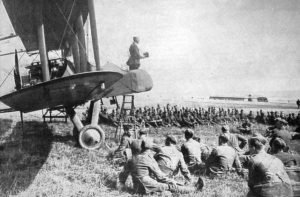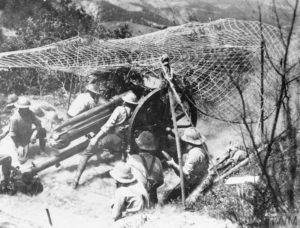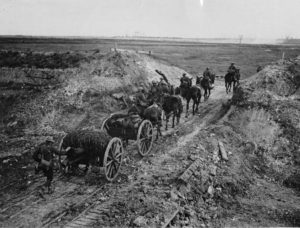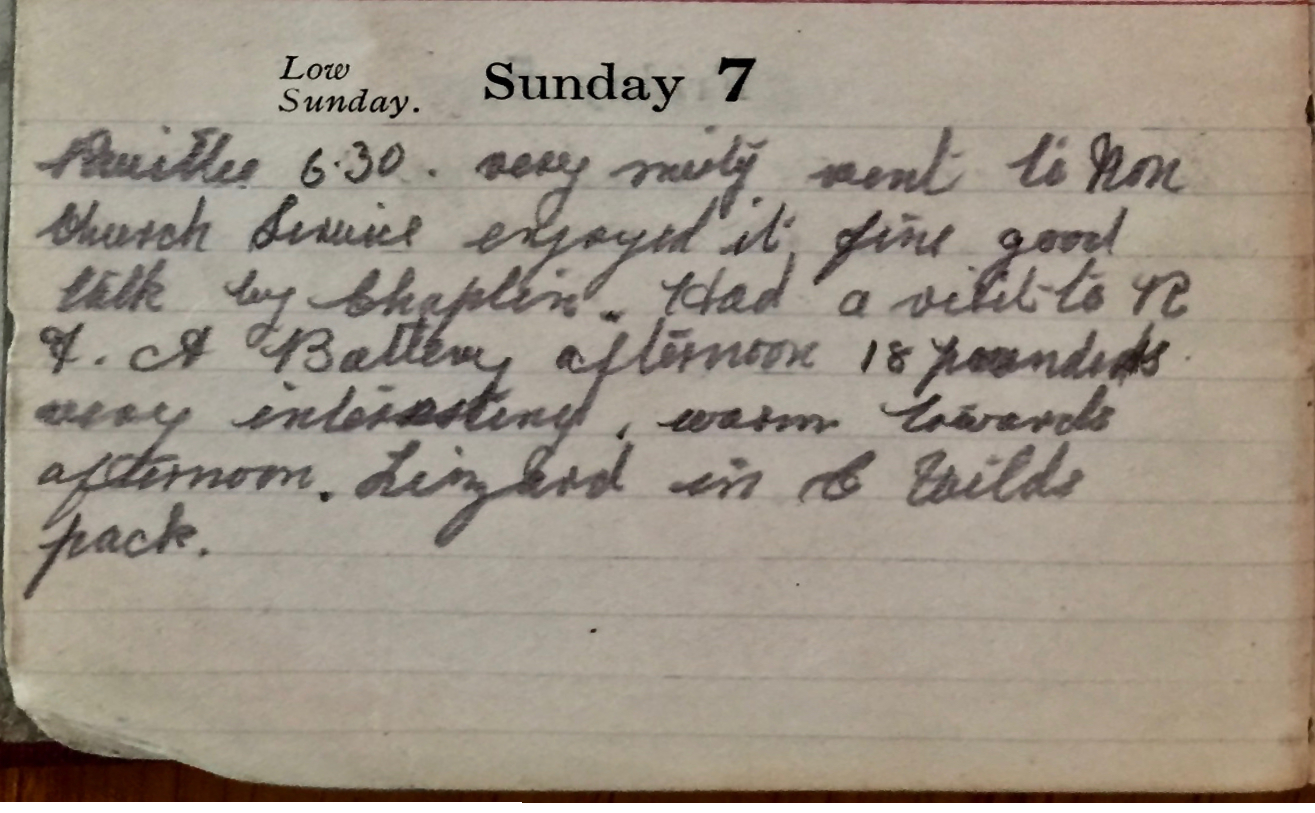Sunday April 7th, 1918
Reveille 6:30, very misty, went to non-Church Service. Enjoyed it fine. Good talk by Chaplin. Had a visit to RFA Battery in afternoon. 18 pounder – very interesting. Warm towards afternoon. Lizard in C. Wild’s pack.
Non-Church Service

When I read ‘non-Church Service’ in Frank’s diary, the phrase seemed like an oxymoron. The Battalion’s diary sheds light on this. Frank is being economical with his words and is most likely referring to the Non-Conformist service – which is going to be held this morning at 9am in a ravine. I also wondered whether or not this showed a pecking order: the Church of England (C0fE) and Roman Catholic services are held in the Brigade Canteen and the Non-Conformist service is in a field…
At the war’s end, approximately 30% of adults in Britain were members of some religious order, equating to ~8 million people. Interestingly, this percentage was very slightly up from 1914. Of these, the largest group was the non-Conformists at 3.7 million; then Anglicans (CofE) with 2.3 million; Roman Catholics, 1.7 million; and other religions at 0.2 million.¹ So perhaps Frank and his fellow ‘dissenters’ were in the open air because no building in Saida Camp could accommodate their number.
This photograph shows an Army Chaplain conducting a service using an aeroplane as a pulpit on the Western Front in September 1918.² See also an earlier post contemplating religion in times of war.
An ’18 pounder’ up close

Today Frank also seems to have enjoyed visiting one of the Royal Field Artillery’s Batteries to see the 18 pound guns. These were the standard field gun of WWI.
During the war almost 10,000 were manufactured and by the end of the war those on the Western Front had fired 99.4 million rounds (mainly filled either with shrapnel or high explosives).
By 1917, as standard, the 66th Division (in which Frank and the 13th Battalion served) would have had two artillery brigades each with three batteries of six 18 pounders and one battery of six 4.5″ howitzers.
The BSF’s Field Artillery Brigades would also hold 18 pounders centrally for flexible deployment.³

This photograph shows a British 18 pounder field gun firing from a camouflaged position on the Dojran Front. Note that the soldiers are in tropical uniforms.#
These guns were mobile. The second photograph shows an 18 pounder gun and its limber being pulled by the standard configuration of six horses. They are passing through a cutting in the Canal du Nord, France.
A driver is mounted on each of the three leftside horses. The gun’s Number One, a Sergeant, rides ahead. On top of the gun is stowed its portable camouflage netting.^
13th (Service) Battalion War Diary – 7th April 1918 – Saida
Church services:- In Brigade Canteen, Saida Camp, Church of England Holy Communion at 12:00 hrs, Evening Prayer and an address at 15:00 hrs. Roman Catholic Mass 09:15 hrs. Nonconformist Service at 09:00 hrs in ravine opposite HQ. Tents were struck and blankets laid out in the sun.
References & Further Reading
¹ Some Historical Religious Statistics, BRIN, University of Manchester
² UK & WWI from The Chaplain Kit
* photograph from ‘The Illustrated London News’, September 28th, 1918. Image may be subject to copyright.
³ 18 pounder field gun on Wikipedia
# Q112308 copyright Imperial War Museums
^ photograph of Gun and limber from Field Marshall (Earl) Haig’s collection in the National Library of Scotland


